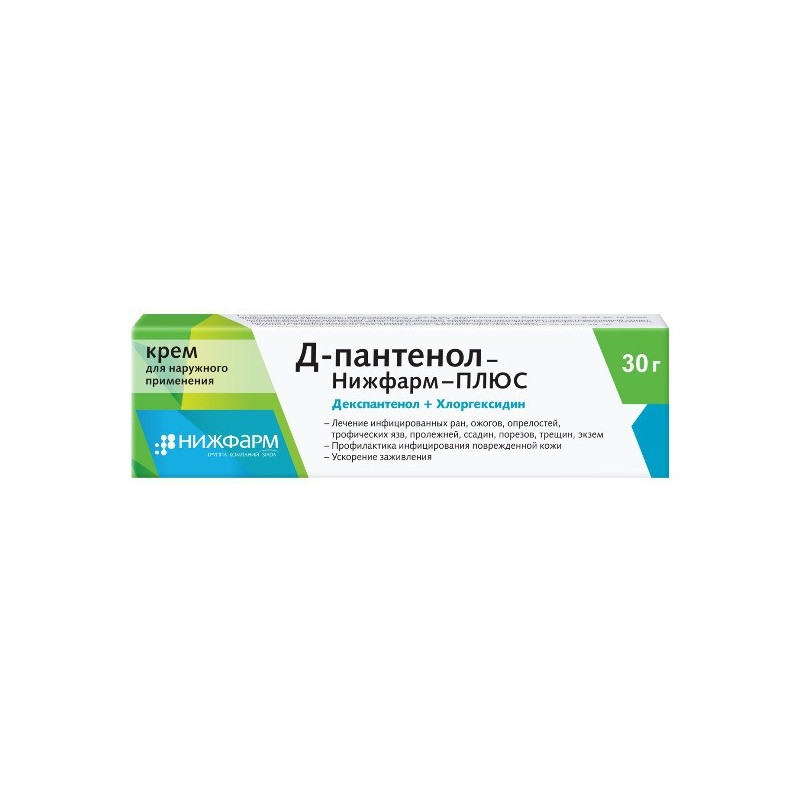



 All payments are encrypted via SSL
All payments are encrypted via SSL
 Full Refund if you haven't received your order
Full Refund if you haven't received your order
International non-proprietary name
Dexpanthenol + Chlorhexidine
Cream for external use.
1g cream contains:
- active ingredients: dexpanthenol - 52.5 mg, chlorhexidine digluconate - 8.02 mg (in the form of chlorhexidine diglucanate solution 20% - 42.7 mg);
- excipients-, propylene glycol - 100 mg, macrogol cetostearate - 16 mg, cetostearyl alcohol [cetyl alcohol not more than 60%, stearyl alcohol not less than 40%] - 54 mg, liquid paraffin - 100 mg, petrolatum - 100 mg, sodium hydrogen phosphate dodecahydrate - 0.2 mg, potassium dihydrogen phosphate - 7.8 mg, water - up to 1 g.
Cream white or almost white.
Tissue repair stimulator
Combined drug. Dexpanthenol is a vitamin B group, is metabolized in the body to pantothenic acid, which is an integral part of coenzyme A and is involved in acetylation processes, carbohydrate and fat metabolism, in the synthesis of acetylcholine, glucocorticosteroids, porphyrins; stimulates skin regeneration, normalizes cellular metabolism, accelerates mitosis and increases the strength of collagen fibers. It has a regenerating, vitamin, metabolic and anti-inflammatory effect. Chlorhexidine - an antimicrobial drug, is an antiseptic.Effective against Gram-positive and Gram-negative bacteria, including Staphylococcus spp., Enterococcus spp., Pseudomonas aeruginosa, E.coli, Streptococcus spp., As well as yeast-like fungi and dermatophytes. Remains active in the presence of blood, pus, various secrets and organic matter.
D-Panthenol-Nizhpharm-PLUS cream protects the wound surface from infections, suppresses the course of the infection process and accelerates healing.
Treatment and prevention of infected skin lesions:
- for the treatment of wounds at the risk of infection (abrasions, cuts, scratches, cracks, scratches, including after insect bites, burns, trophic ulcers);
- for the treatment of postoperative wounds;
- for the treatment of infected wounds, burns (including solar), bedsores, abrasions, cuts, cracks, trophic ulcers, diaper rash;
- for the treatment of infected dermatoses (including eczema and atopic dermatitis).
In children, it is also used for diaper dermatitis, scratches with signs of infection.
In nursing mothers - with cracks and inflammation of the nipples of the mammary glands with signs of infection.
Hypersensitivity to the drug.
Outwardly. The cream is applied with a thin layer to the affected skin once or several times a day according to indications. Breastfeeding mothers lubricate the infected surface of the nipple with a cream after breastfeeding. Infants are applied to the site of infection after a change of linen or water treatment.
Allergic reactions are possible.
Interaction:
Chlorhexidine is not compatible with soap and other anionic substances.
Avoid eye contact. In pregnancy and lactation, use should be avoided over large areas.
Cream for external use.
Keep out of reach of children at a temperature not exceeding 25 ° C.
